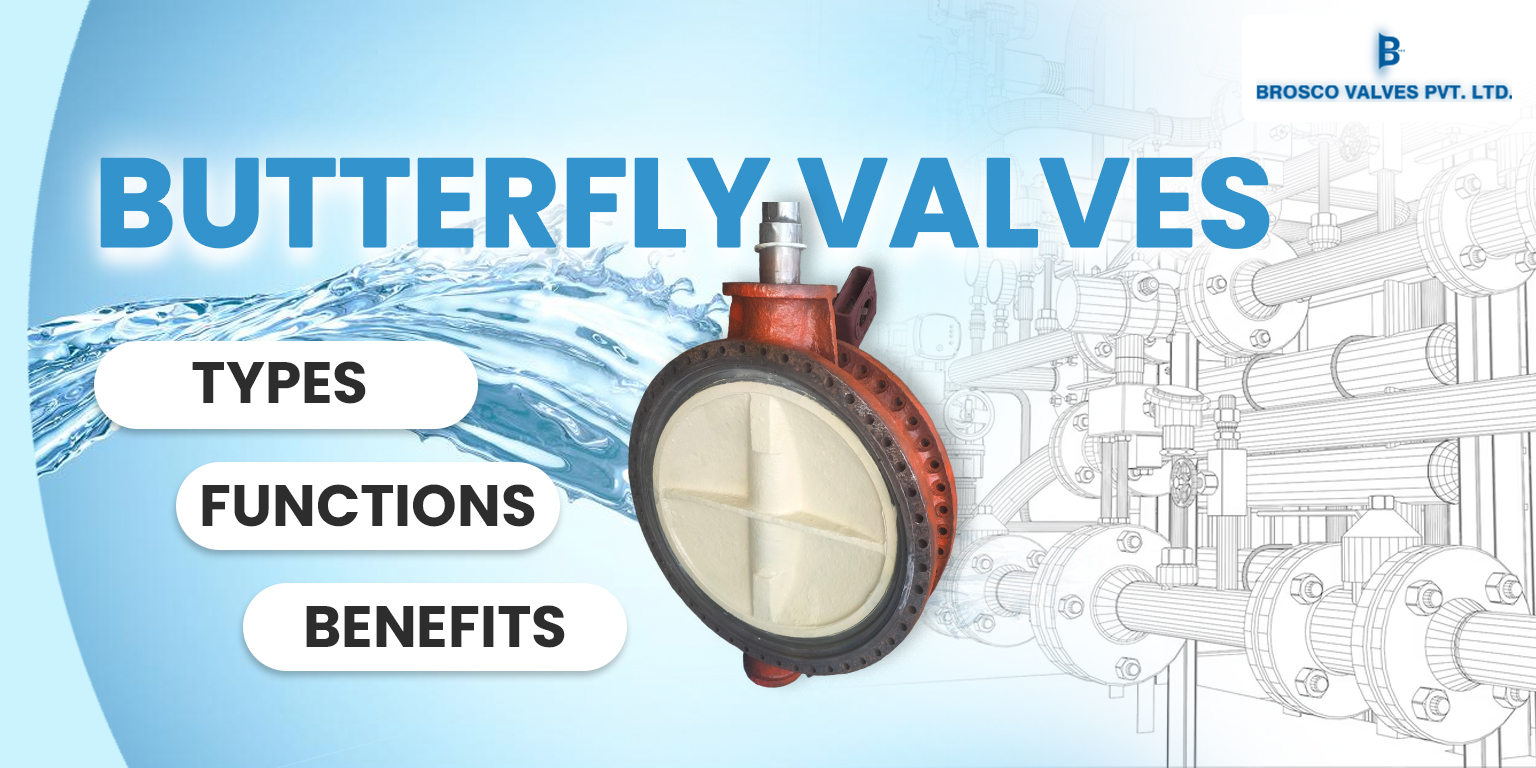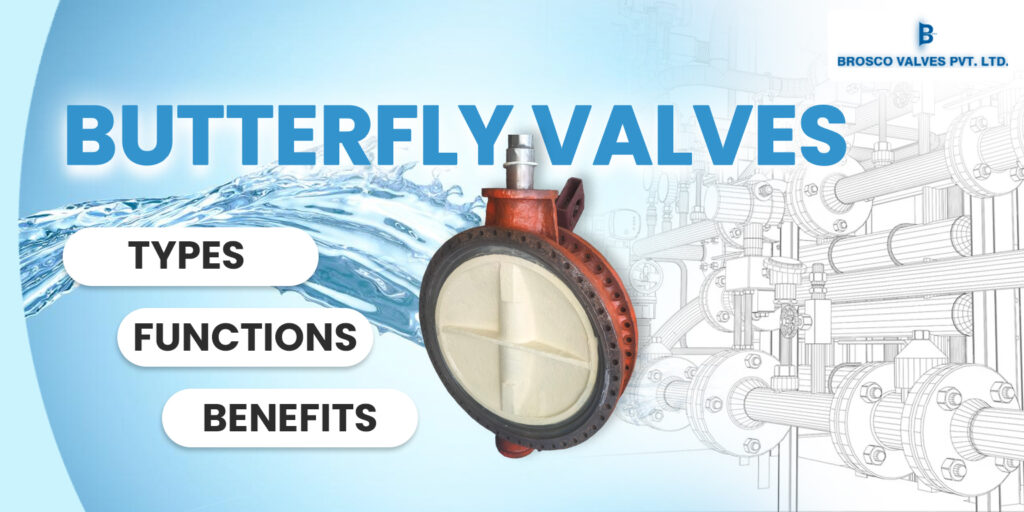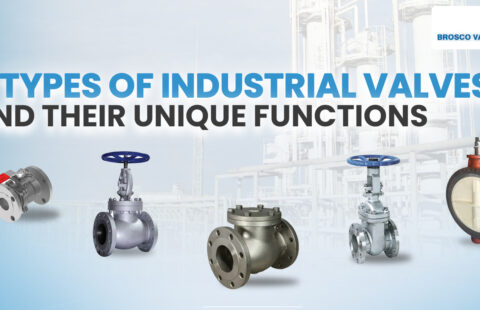
Butterfly Valves: Types, Functions, and Benefits

Factories and industries typically deal with different types of fluids as part of their manufacturing processes. Regulating the flow of these fluids is an essential aspect of safety and cost reduction, because any leakage can cause colossal damage to life, property, and products being manufactured. Butterfly valves, a type of industrial valves, play an important role in controlling their flow.
How do Butterfly Valves Work?
These valves consist of disks, which are located at the valve’s center and rotate at a right angle, opening and closing to regulate the flow of fluids. Pipe flanges hold these disks together.
An actuator and a rod inserted through the disk control its movement. The disk rotates at right angles to open and close the valve and control fluid flow.
As the actuator turns around, the disk gets positioned either parallel or perpendicular to the flow.
Common Types of Butterfly Valves
Wafer-type Butterfly Valve
Here, the valve clamps between two pipe flanges. The compact disk is secured with anti-leak metal sealants, forming a leak-proof closure to regulate the passage of fluids and gasses.
Because of its design, the wafer-type butterfly valve requires more pressure to operate, but its installation requires minimal effort.
These valves are commonly used in HVAC systems, petrochemical processes, food processing, power generation systems, etc.
Lug Butterfly Valve
This type of butterfly valve doesn’t make use of pipe flanges—as the name suggests, it is fastened by lugs. These easy-to-mount valves have flange bolts that can be directly threaded into the valve, which ensures cost effectiveness.
Since they are extremely durable, lug butterfly valves are perfect for use in high-temperature and high-pressure environments and offer 100% leak-proof solutions.
High-Performance Butterfly Valve
With a metal-to-metal seat design, these valves have excellent flow control and are often used to regulate the flow of hazardous chemicals, usually in pipelines or power plants.
With a low torque, the high-performance butterfly valve is easy to operate and can also contribute to the durability of the actuator used to rotate its disk. Further, since these valves are made of stainless or carbon steel, their shut-off capabilities are exceedingly high.
Zero-Offset, Double-Offset, and Triple-Offset Butterfly Valves
Each of the types of butterfly valves mentioned above can be classified as zero offset, double offset, and triple offset.
Zero-Offset Butterfly Valves
In this type of butterfly valve, the stem and disk of the valve are placed at its center, and the valve rotates around its central axis. Since the disk rotates in the same axis as the stem, these valves are called “zero offset.”
Being basic and cost-effective, these valves are best suited for low-temperature environments and to handle non-hazardous fluids, like water.
Double-Offset Butterfly Valves
Here, the disk is connected to a rod, which is attached to a lever. When the lever is turned, the disc rotates, opening and closing the valve. So, the seat of the valve is offset to the front side of the valve’s body, and the disk is offset to the shaft’s front side. Because of this off-center positioning, butterfly valves are highly durable, as there’s no contact between the disk and seat.
Triple-Offset Butterfly Valves
These valves have the same two offsets that double-offset valves do, but an additional right-angled conical sealant as the third offset. It’s the most advanced type of butterfly valve, with low emissions.
Functions of Butterfly Valves in Factories
HVAC Systems
Butterfly valves are commonly used in HVAC systems to regulate fluid flow, particularly in large commercial systems with high flow rates and requirements. Air handling units, cooling towers, and chillers are some HVAC areas in which these valves are effective
Food Processing Systems
Valves that are of a basic design but highly durable are preferred in the food and beverage industry. So, butterfly valves are commonly used in factories dealing with the manufacturing of such items.
Ship building
Since butterfly valves do not corrode in salt water, they are commonly used to prevent the flow of water when building ships. Also, the spaces inside ships are often narrow, and the compact size of these valves works perfectly.
Oil and gas
These lightweight valves are commonly used in the oil and gas industry to regulate the flow of these elements, with minimal maintenance required over a long period.
Butterfly valves are common choices for the light weight, compactness, and durability. But before buying a butterfly valve, one should consult with premium butterfly valve manufacturers about the type of butterfly valve to opt for, based on their factory requirements. We at Brosco are here to guide you with the end-to-end valve manufacturing and installation process. Connect with us today!

